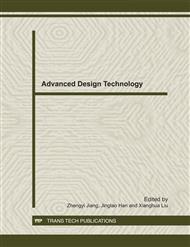p.364
p.369
p.373
p.377
p.381
p.388
p.392
p.397
p.402
A Computer Aided Assembly Sequence Evaluation Method Based on the Fuzzy Theory for the Complex Products
Abstract:
Aim at the characteristic of airplane assembly sequence evaluation, which has too many rules, and the quantity process of qualitative rules is too complicated, this paper presents an evaluation mode based on the fuzzy theory and the multi-index progressive model. According to the evaluation rules space and the coefficient distributed method of rules compared, it divides the rules space into force associated decision-making gather and weak associated decision-making gather by defining the cut value. Then it adopts the maximal subjection fundamental to implement the function of assembly sequence evaluation. An instance about airplane sub-assembly is used to prove this method can solve a practical application availably.
Info:
Periodical:
Pages:
381-387
Citation:
Online since:
December 2011
Authors:
Price:
Сopyright:
© 2012 Trans Tech Publications Ltd. All Rights Reserved
Share:
Citation:


